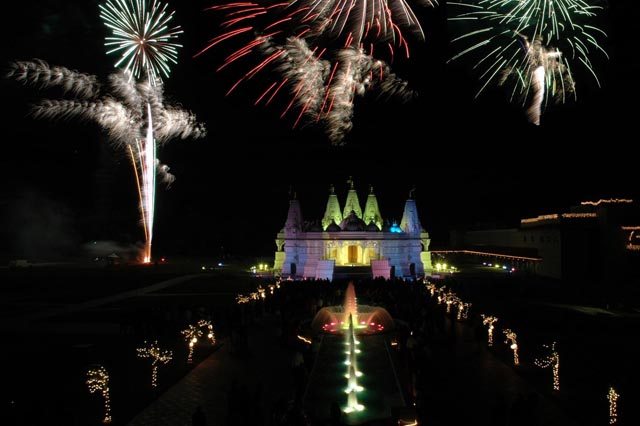
Diwali Comes to America
The fireworks still explode in the memory, and the taste of nuts and cream and sugar still linger on the tongue. For immigrants from India, the childhood memories of Diwali are strong, for it is a time when India transforms into one glittering celebration. Public buildings are illuminated with neon lights and every home, no matter how humble, is ablaze with earthen lamps. In fact, entire villages are turned into fairylands, dotted with millions of lamps, glowing in the dark of night.
Deepavali Memories
Diwali, also known as Deepavali, was the biggest thing in childhood for most Indians and the lighted lamps, the sweet treats and the festive air are hard to forget, even as one walks in the anonymity of Manhattan where Diwali is just another ordinary day and the trains run and the crowds rush and nobody really cares.
Immigrants remember the three nationwide holidays for Diwali, Hinduism’s biggest celebration, with the gift of new clothes, the plethora of sweets and the endless firecrackers they set off as children. They remember the bichus, the anars and the phuljaris, each sparking with the touch of a match. Here in the U.S., there is no holiday and there’s a ban on fireworks, but Indians try to recreate some of the magic of Diwali with street fairs and celebration. Now, the landscape is indeed changing; where earlier there were no Indian stores, now there are hundreds. Walk in any Little India area, and you may as well be back in Apna Desh.
Food and memory are intricately linked and we asked Suvir Saran, the noted chef to share his Diwali memories with us, and for his special dishes for the festive season
“Diwali in our Kayasth household was a showstopper,” recalls Saran. “A few days before Diwali is Dhanteras – and for Dhanteras you have to buy a new cooking utensil – that’s the most important thing that every Hindu has to do. The token utensil could be anything – a tawa, a degchi or a pressure cooker. Every year, I for one, would look forward to seeing what dadi and mummy were going to buy – that was when I knew Diwali was around the corner!”
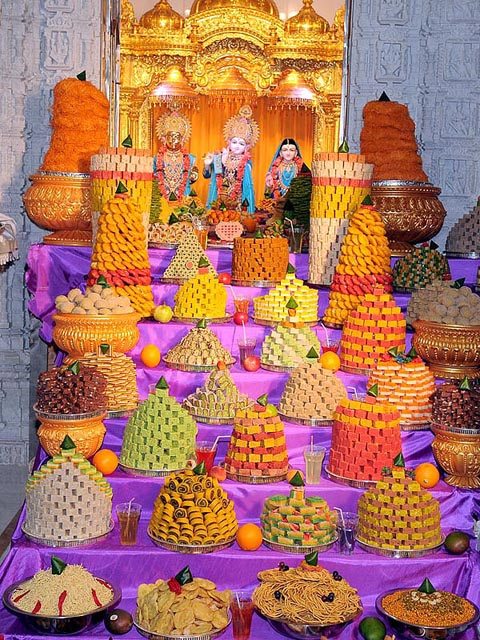
Diwali: Days of Feasting
In the Saran household, the signs of Diwali approaching were all over the place. Even ten days before Diwali, he would come home from school to find the most tantalizing aromas. “I’d see my grandmother sitting at the entrance of the kitchen giving instructions to Panditji, our family chef and to my mother. Normally it was Panditji’s kitchen – and everyone else was out of it! But because it was Diwali, the bahu had to be there, cooking, and what they were making was matri and gujjias which our family was famous for.”
All day they would buno or stir the khoya, to which they would add raisins, almonds and cardamom. “The khusboo around the house would be phenomenal!” says Saran. This aromatic khoya mix would then be stuffed into the crescent shaped gujjias.
Those two pre-Diwali weeks were heaven for Saran because it was like open season on sweets. He especially enjoyed the gujjias as they came out hot from the searing heat of the karai. His mother knew to keep the gujjias away from her son’s notorious sweet tooth: “She knew if she kept frying them and feeding me, I’d finish hundreds in one night!”
The Saran family’s traditional Diwali rituals included making big, flaky matris, with layers like puff pastry. These would be served with achar or pickles: “Every time people came to the house in the evening during the festive season these gujjias and matris were served to all the guests, along with khoya ki barfi, all sorts of dried nuts and fresh mithai.”
The other Diwali treat was gulgulas – an Indian version of fried Italian dough balls made with atta and saunf – when they are deep fried, the gur caramelizes so they are sticky and chewy and nothing is tastier, says Saran. His job was to light all the diyas on the ledges of the house so he would be with the cook and servants, reaching up with the matches because they had to be lit by a family member.
“We’d have 30-40 people come for Diwali night dinner and hundreds of samosas would be made by Panditji, rolling the pastry from scratch,” he recalls. “ Dinner had to be totally vegetarian – biryani made out of katal or jackfruit, which is vegetarian but has a meaty texture.” In fact, this is a dish that is quite uncommon in India too, and Saran likes to serve it at Devi.
The other specialties on the family table were Rasawalle aloo and Gobhi Mussalam, a full head of cauliflower steamed in milk and deep fried, and served with tomato gravy poured on it. There would always be paneer in some form, sabut matar – green peas cooked with the pod – and karari bindhi, crispy okra, which is also served at Devi to give crunch to the Katal biryani.
Since the family was from UP, one of the Diwali specialties was pitta ki kachori, which is stuffed with urad daal inside. Kheer would be an unusual one, Makane ki kheer made out of lotus seed or phool makanas. These are fried in ghee and cooked like a rice pudding for hours till the milk thickens, and enhanced with raisins, nuts and kesar. Other must haves included Halwa puri: Says Saran, “It was all about deep frying – for puja you have to deep fry things and keep for ghee is purifying.”
The table was studded with sweets of every color, including dhanedar barfi and fresh kalakand. Says Saran with nostalgic yearning: “It would be one big sugar festival!”
Now in New York does he carry on any of these traditions? He says, “I don’t do as much as I’d like to – but we do a puja at home, Lakshmiji ki arti – and I always make the aloos and the kachoris and some kind of kheer.”
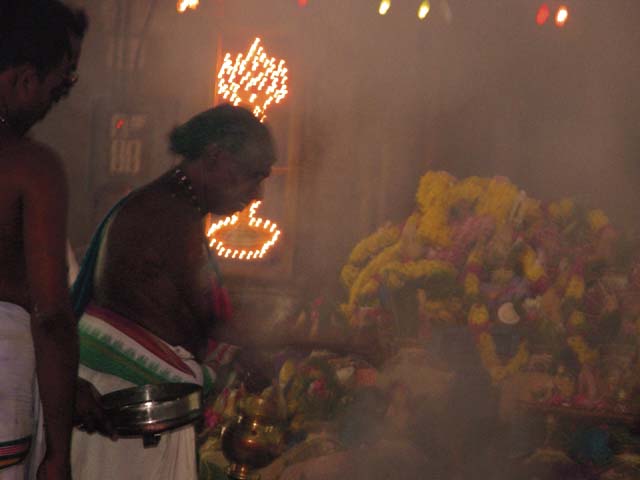
At Diwali, Faith Rejuvenated
Indeed, at its heart the celebration of Diwali is about prayer, rejuvenation and new beginnings. In temples across the country, in family shrines and in offices, prayer rituals take place as the icons are bathed in milk and honey, and offered fresh flowers and sweets.
On Dhanteras, when special prayers are offered to Lakshmi, the Goddess of Prosperity, many devotees buy token amounts of gold or silver to assure continued prosperity. A day before Diwali, temples observes Anakutam, which means Gathering of Food. The worshippers bring in hundreds of offerings of sweets and fruits to be blessed by the Goddess Lakshmi. On Diwali day, the devotees receive these gifts back as a benediction. The highlight of the puja ceremony is the lighting of one hundred and eight silver lamps amidst chanting from the priests.
Diwali is about tradition, and even fast-food eaters and those who cook up a quick pot of pasta after work, suddenly yearn to recreate the meals of the holiday season. Young professionals living on their own return home to their parents for the remembered taste of Diwali delicacies. Immigrants try to recreate the meals that were served in their homeland, and depending on which part of the country, they are bound to be different. Each area has its version of Diwali and festive delicacies.
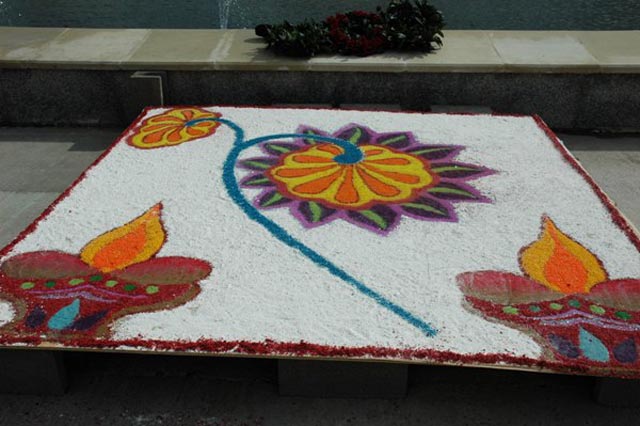
Diwali on Main Street, USA
Now America is criss-crossed with Indian grocery stores so finding the ingredients or the spices is never a problem – in fact, these amazing stores carry the products of all of South Asia and even from the UK, Canada and locally made Indian foods. Diwali is about the past and so many families still try to make the sweets from scratch, as a token. Vanita Sakhrani, who has lived in Rego Park for 33 years, remembers a very different scene when she came as a new immigrant in 1977. “There were no mithai shops in New York at that time and we made the sweets at home from scratch. When the first one opened in 1973, it was our first taste of mithai from an outside source. Now it’s so easy to go to a shop and buy.”
Sakhrani, however, has a passion for mithai-making and still keeps the tradition alive by making some of her specialties as offerings for the Gods and for close family. Most Hindu women do make some token sweets at home but for all of them this proliferation of sweet shops has been a real time-saver, for sweets are an integral part of Diwali and you wouldn’t visit friends without a box of sweets in your hand.
As Diwali approaches and there is a decided nip in the air, you stop at stores and admire the jewel-like sweets piled up behind glass: the orange jalebis, the pink chumchums, the golden son papri and gulab jamuns, the diamond like barfis, and the emerald pista mithai. The traditional Diwali treats have followed the immigrants to America and now it’s possible to have the delicacies that were a part of an Indian growing up.
The festive season is particularly busy for sweets stores, with hundreds of thousands of pounds of sweets being sold. Indian, Pakistani and Bangladeshi sweetshops are on overdrive – and Diwali truly becomes a festival involving so many different people.
Diwali Inc.
While Diwali day means a vegetarian meal and prayer, the festivities surrounding Diwali ensure the community is a-buzz with card parties, Diwali lunches, Diwali galas and dinners during the holiday week. The Sindhi community has a huge Diwali Ball in Manhattan while other communities have festive dinners and lunches. There are ladies lunches at private homes and Indian restaurants. The whole idea is to get together for Diwali and celebrate the festival together.
Diwali has become commercialized with busy people with no time to cook often buying ready to eat or going out to eat. Restaurants from the biggest to the smallest dhabas do a brisk business during Diwali. For restaurants this is the busiest time of the year with parties in-house as well as catering orders across the boroughs and in the suburbs. Many of the restaurants come up with specials for Diwali but the usual menu is rich enough too. Some of the restaurants are lit up for Diwali and complimentary sweets are offered to the patrons.
Catering has become big business and it’s become easy to create your own menu and ask the restaurant to cook it up for your guests. Diwali parties for the community are held in an array of catering halls and restaurants. As the social circles have increased, the number of parties, many organized by deejays and party impresarios, are also adding a sparkle to the Diwali season.
For those trying to have a Diwali party on a budget, there are some other options too: there are cooks who will come to your home and create the meal or cater from their home at a flat rate. In Queens and New Jersey – and even as far as North Carolina – there are Indian women who will cook you the meal of your dreams from home! The trick is knowing where these wonder women are – and it’s usually by word of mouth in the community grapevine for they rarely advertise.
Another resource that many families turn to at Diwali time is their own close circle of friends. Every year these families get together at each other’s home for a potluck Diwali dinner. Each brings her own specialty so that by the end of it the entire table is flooded with over 20 dishes and desserts, with very little effort on the hostess’ part. There’s usually such a surfeit of riches that in the end friends are given doggy bags or yogurt containers filled with Diwali leftovers!
In India, Diwali dinner would never be served on paper plates but here, with little domestic help, it’s perfectly acceptable to use paper goods and every other time-cutting resource available. In this, the countless Indian groceries are a great help with their endless supply of frozen snacks.
Since none of us have Suvir Saran’s Panditji to make the samosa patris from scratch, we just open the freezer in Patel Brothers or Apna Bazaar and pull out ready packs of samosas! In fact, the manufacturers of frozen goods have become increasingly innovative, offering everything from large spinach and paneer samosas to those stuffed with jalapeno peppers! Then there are bite-sized spring rolls, vadas, and dhoklas – all ready to be fried.
Snack shops like Rajbhog, Dimple, Rasraj, Maharaja and Usha Sweets also offer catering and a huge assortment of ready to eat snacks and sweets, ranging from bhel to mirchi pakoras and daal kachoris. Add these to your home-cooked menu and the meal immediately gets a festive air.
The sweets of course are the main attraction of the Diwali table and people throw diet and weight watching to the wind for these few days as they savor the tastes of their childhood in the form of gulab jamun, kheer and rasgullas. Again, each region has its own specialties and the amazing Indian repertoire is endless. The huge South Asian population in America has ensured that manufacturers are willing to bring in every kind of sweet and food item, because they know they have a huge market willing to open up their wallets.
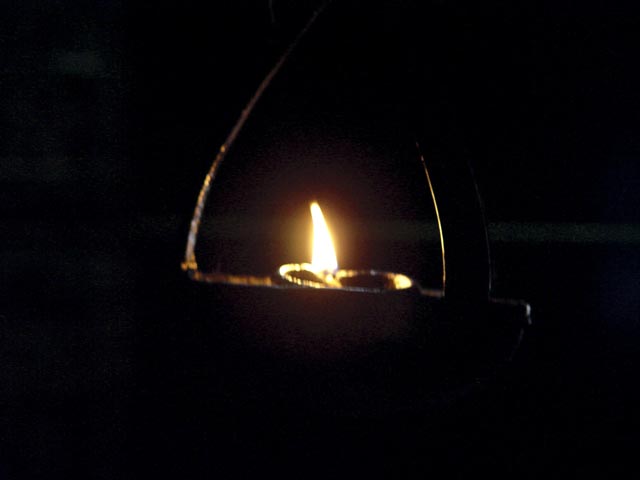
Do-It-Yourself Diwali
Interestingly enough, many second generation Indian-Americans as well as Indians who came here as students are showing an interest in learning cooking. Some write, email or phone home for well-loved recipes, others even join cooking classes. The cooking expert and cookbook writer Julie Sahni runs a very well regarded cooking school and she says she gets many young Indians wanting to learn how to roll puris or make classic dishes.
For the do-it-yourselfers, there are scores of cooking books. Walk into any Barnes and Noble or click on Amazon.com to see the wide range of books on Indian cooking, many of which have a special section on Diwali sweets. Madhur Jaffrey’s first cookbook ‘An Invitation to Indian Cooking’ was published in 1973 and she’s been a household name since then. Her cookbooks including ‘World Vegetarian’ and ‘Step-by-Step Cooking’ have traditional festive dishes as well as desserts such as kulfi and kheer. Julie Sahni also has several books including ‘Classic Indian Cooking’, and ‘Savoring India’ which have some great recipes suited for the holiday season.
If you want to get a Vedic slant to your Diwali dishes, then a comprehensive book is ‘Lord Krishna’s Cuisine’ by Yamuna Devi which includes such desserts as Khara Pista Barfi, Gajjak, Manohara Ladoos and Malai Chumchum. – – no watching your weight with this book which uses Lord Krishna’s favorite ingredients!
If you want to go the skinny route, then there is Anjum Anand’s ‘Indian Every Day – Light, Healthy Indian Food’. Here you will find dishes suitable for Diwali such as achari aloo baigan, ghiya ka kofta curry and kesari pullao. There are sweets too such as phirni, sandesh and meetha poora but Anand has lightened them all while retaining their original character.
Suvir Saran also has ‘Indian Home Cooking’ and this includes some of the recipes he’s so nostalgic about, such as Gobhi Masalam, Dum Aloo and Kheer, and he also teaches cooking in New York, adapting and simplifying Indian cooking to suit the hectic lifestyle without compromising on taste.
For Indian immigrants who have left their homeland and settled in places as far apart as South Africa and Hong Kong and America, Diwali is the one day when they all light the lamps and recall their culture and their roots. And for some, Diwali happens all year around! It’s simply a state of mind.
As Suvir Saran says, “in my warped thinking” it is Diwali when the fireworks go off on the Fourth of July, it is Diwali during the sparkle of Christmas and so when Diwali really arrives in New York and he is lighting a diya alone in the solitude of his apartment – he mentally remembers all the joy and commotion of other festivals and of Diwalis past, of celebrations with grandparents and parents, and the cumulative glow lights up his quiet Diwali with happiness and contentment.
© Lavina Melwani
Related article: Navratri – Goddess Power
Related Article: New!Diwali Truffles
Related Article: What was on your table this Diwali?

1 Comment
Posted by tarayarla
Wonderful blog post in honor of Diwali. Take a trip down the memory lane of an Indian immigrant as she recalls her Diwali experiences, or read about how second-gen Indian-Americans are remaking the holiday in the states. #diwali #deepavali #sweets #awesome
Originally posted on Indian American Story: Blog for the Smithsonian Indian American Heritage Project.